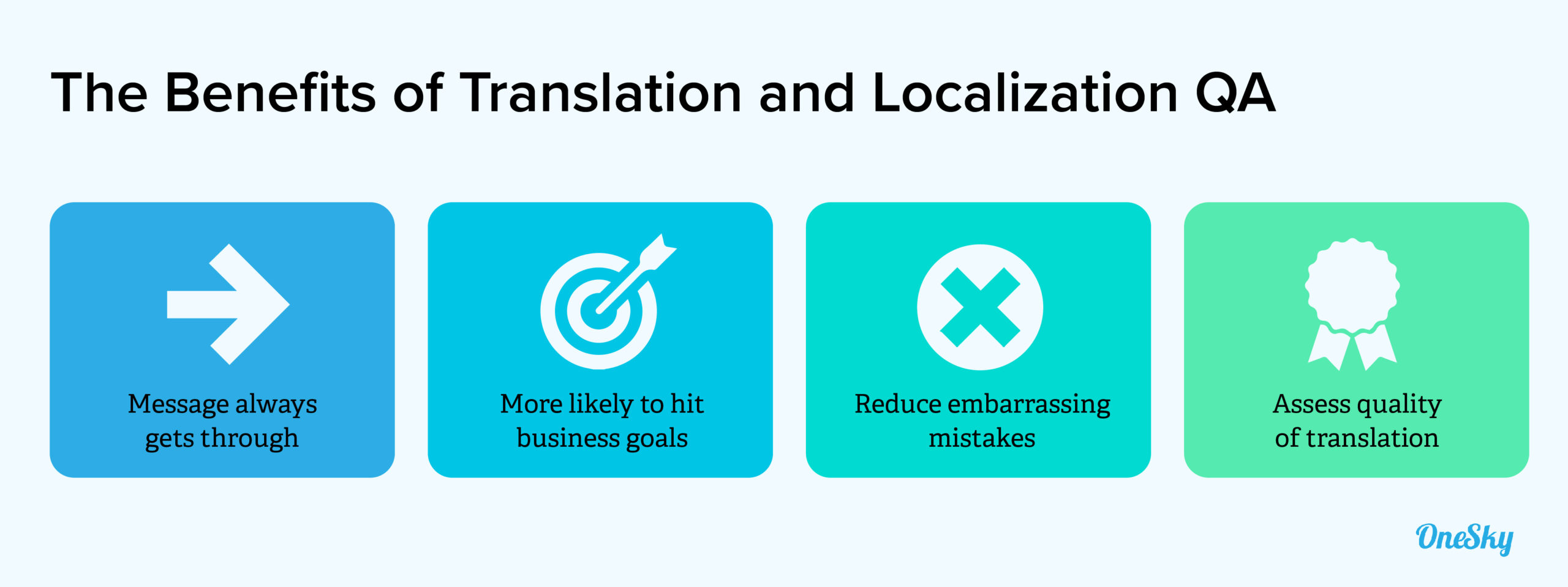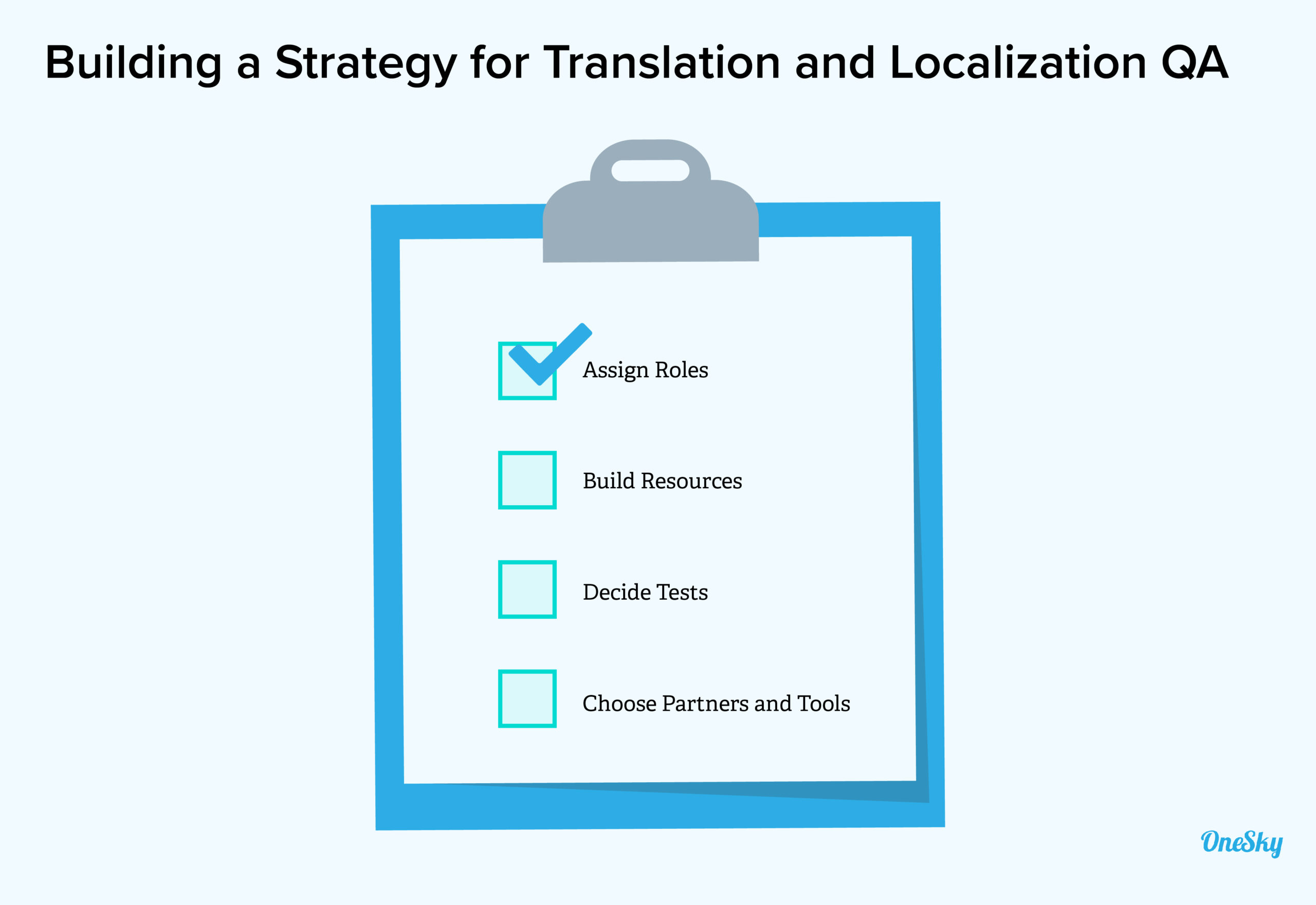Quality Assurance for Translation and Localization: The Ultimate Guide
For any business that wants to conquer new markets, localization is an essential process. After all, consumers are far more likely to connect with marketing content and product descriptions that they fully understand. Quality assurance in translation and localization is about making sure your content hits the mark.
If you would like to guarantee the quality of your translations, setting up some form of assessment is a smart move. In this guide, we’re going to show you how to build a thorough QA process — from individual tests to recommended tools.
What Is Quality Assurance in Translation and Localization?
Just like any service, the quality of translations can vary. For this reason, companies that work in multiple languages usually have a quality assurance process for localized content.
The most effective systems begin prior to translation, and end with final checks before publishing. They include both active QA measures, and tests that are designed to detect flaws.
Some of these tests focus entirely on the language aspect, while others are designed to pick up any faults within your product. As such, the translation quality assessment usually requires input from both linguists and technical personnel.
Many LSPs (language service providers) offer translation quality assurance as a service, meaning you can outsource the whole process. If you prefer keeping quality control in house, there are specialized tools which can automate certain tests.
What Are the Benefits of Translation Quality Assurance?
If you have ever tried to assemble a product with the help of poorly translated instructions, you will realize how important translation quality can be.
Even if content is in the right language, poor translation work can lead to the message being lost. In addition, errors do not reflect well on your brand.
A good translation quality assurance process should minimize the number of mistakes and reveal any flaws in your content, so that corrections can be made before publishing. As a result, your translated content is much more likely to deliver on your business goals.
The process can also help you to assess the performance of your chosen translation service. Test results can indicate areas for improvement, meaning you can target your feedback. And over time, quality scores can help you decide which service is worth your money.

3 Key Stages of Translation and Localization Quality Assurance
While quality assurance includes many individual steps, the process usually involves three key stages. Let’s take a closer look at each of them:
Localization Readiness Testing
Your business may be ready to expand into new markets — but is your website or app? Before you begin the localization process, it’s a good idea to check how a change of language will affect your product.
This is the purpose of localization readiness testing.
This form of quality assurance can reveal potential problems lurking below the surface, either in your code or your user interface. For example, you might be using plugins that do not support your target language.
Resolving the issues at this early stage can save you some major headaches once the localization process is underway.
Linguistic Quality Assurance
The next stage of testing focuses on your content. Linguistic quality assurance, or LQA, can be split into three sections:
- Pre-translation
- In-translation
- Post-translation
Pre-translation tests are about making sure that the source material for translation is free from errors. This is essentially normal proofreading and editing.
The aim of in-translation quality assurance is to reduce the amount of errors made during translation. In particular, these processes are designed to cut out inconsistencies, incorrect terminology, and context-related problems.
Post-translation quality assurance is a review process that covers the meaning, formatting, grammar, and punctuation of localized content. The tests should pick up any other mistakes made by the translator.
If your aim is to provide your target audience with high-quality translations, linguistic QA checks are really important. Translators are not editors, and even the best will make occasional errors — and that is not to mention any problems in the source material.
Ideally, linguistic tests should be performed by a language professional. But you shouldn’t ever use the same person who performed the original translation. The whole point of linguistic testing is to get a second opinion, and another set of eyes looking for problems.
Functional Quality Assurance
The final stage of quality assurance relates to technical matters. Once you are satisfied with the quality of your translated content, engineers must implement the localization.
This process requires no knowledge of your target language. However, the engineers must ensure that the translated content is integrated properly. This may involve converting files to the right format, and uploading them to the right location.
After this process is complete, all that remains to be done is functional testing.
Effective localization involves a lot of change within your website or app. Sometimes, switching to a different language or script can break things. But the cracks might not appear unless you stress-test your product. This is why it’s necessary to run functional QA checks.
Some of the elements that need to be tested include:
- Interface layouts
- Fonts
- Text direction
- Links
- Buttons
- Images
While many of these technical tests can be automated, we recommend performing on-device testing with real users. You never know exactly how localization is going to affect your code or design, so it’s sensible to run a final check before releasing your product.

How to Build a Strategy for Quality Assurance in Localization
Now we have a high-level overview of quality assurance for translation and localization, it’s time to dive into the details.
An effective QA workflow doesn’t need to be complicated. In fact, keeping things straightforward will help your testers to do their job.
As a product or localization manager, your task is to provide clear guidance and design a streamlined workflow. Here is your checklist for success:
Assign Roles
The first priority in any localization project should be assigning roles. This prevents tasks from slipping through the cracks, and it allows your coworkers to plan ahead. It will also help you decide what outside help is needed.
The best place to start is by identifying your project manager. This might be yourself, or someone else in your organization. Whoever is chosen will be responsible for overseeing quality control in localization.
Then, you need to select individuals, or service providers, to handle specific tasks within quality assurance.
Readiness tests are usually performed by LSPs. Linguistic tests are best handled by professional copy editors and translators. Functional QA should be managed by engineers who are familiar with localization, while final testing is usually conducted by quality assurance specialists.
Build a Library of Resources
Professional translators usually do a really good job of interpreting any content they are presented with. However, they can only work with the materials you provide.
To reduce the chance of misunderstanding or confusion during translation, it’s important to offer as much information as possible.
Consider building a glossary of technical terms, and a style guide. Provide context by adding comments to code, and sharing screenshots.
The more resources you provide, the more likely you are to receive high-quality translations at the first attempt.
Decide Your Testing System
There are many commonly used standards, metrics, and individual tests for translation and localization quality assurance. The International Organization for Standardization even has several official certifications for language service providers (e.g. ISO 17100, ISO 9000).
If you work with an LSP, you can largely leave the specifics up to them. You simply need to specify which areas you want to cover with testing. The reports they should provide will offer a breakdown of specific errors or problems, allowing you to compile your own data on points of interest.
If you decide to perform aspects of quality assurance in house, you will need to devise your own scoring system.
Choose Your Partners and Platforms
In terms of improving the quality and efficiency of localization, your choice of LSP or platform really matters.
Most translators today use computer assisted translation, or CAT, to do the heavy lifting. This technology combines machine translation with human oversight, which helps to reduce basic errors in translation. Choosing a service or platform that utilizes CAT is an obvious move.
If you have more than a few pages to localize, we strongly recommend that you use a translation management system, or TMS. Just as WordPress makes it easy to create and edit content, a good TMS will help you track and manage your localization process.
Some of these platforms have additional features that are relevant to quality assurance.
For example, translation memory keeps a record of all translated content, so that no individual term or phrase needs to be translated twice. Translation memory also learns your style over time, thus reducing your reliance on individual translators.

Want to dive deeper into this topic? Download our free ebook, The Project Manager’s Guide To Improving Localization Quality, to learn more.
Choosing a Service for Translation and Localization QA
For these reasons and many more, working with a language service provider is usually your best bet when it comes to improving the quality of your localized content.
OneSky is both an LSP and a powerful translation management system. This means you can access 1,000 localization experts on demand, and equip your own translators with cutting-edge tools — including translation memory.
Our end-to-end platform also helps your engineers with implementing content. Rather than downloading and uploading files individually, they can set up an automated workflow with our API. OneSky even offers on-device testing.
Keen to give it a try? Sign up free today to discover just how effortless quality assurance can be.



 Written by -
Written by - 




 Written by
Written by 


